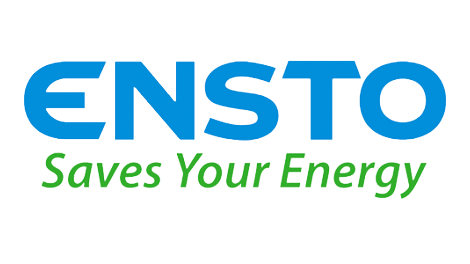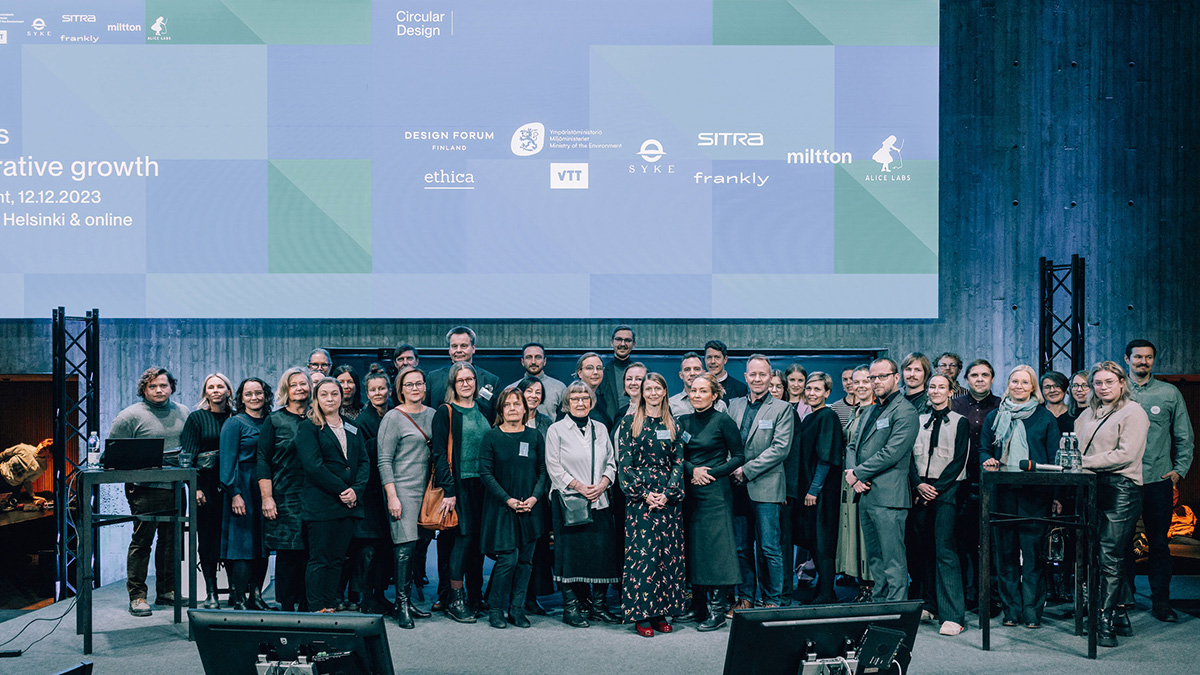Ensto – Ensto completed the first national Circular Design training program organized in Finland
Ensto was one of the 50 companies that had the privilege to participate in the first national Circular Design Program arranged in Finland.
The year-long program was led by Ethica and Design Forum Finland and financed by the Finnish Ministry of the Environment, and it ended in December. The goal was that at the end of the program, each participating company will have the steppingstones for piloting and scaling a concept in accordance with the circular economy. The program offered two tracks to learn: executive/owner and expert paths.
At the beginning, through our own product example, we evaluated what challenges and opportunities there are to improve the circular economy at the product level. As the program progressed, we strengthened the company’s cross-cutting understanding of the connection between the brand and the circular economy – both now and in the future – through workshops and training.
During the program, we identified our own abilities and systems, determining what kind of cooperation and guidance is needed to implement opportunities for increasing material circulation. We envisioned what needs to happen along the way to reach the ambitious goals set for sustainable development in the next few years. Towards the end, we explored Ensto’s role in the world, assessing the carbon handprint that our product enables, and strategized how to communicate about it effectively to support the company growth and renewal.
All in all, the program offered us a network and a toolkit for developing our circular economy work. We continue our development work to promote the circular economy at Ensto and to gain a deeper understanding of our environmental impact.
“Ensto continues to focus on developing the circular economy. This includes reducing emissions, but also increasing positive impacts. At Ensto, this is possible both through the development of competences, innovation and especially collaboration. Above all, the circular economy needs collaboration,” Jenni Raitavuo, Head of Sustainability at Ensto, sums up the next steps.
We would like to thank the Finnish Ministry of the Environment, Design Forum Finland and Ethica Finland for the pioneering work and numerous experts for sharing their knowledge!
Learn more:
- Circular Design Program
- Podcasts from the program (only in Finnish)
- The recording of the program’s closing event (in English)
- A video about the Circular Design program
Pictures: Petri Anttila
SourceENSTO
EMR Analysis
More information on Ensto: See the full profile on EMR Executive Services
More information on D.Sc. (Tech) Markku Moilanen (President and Chief Executive Officer, Ensto Group + President and Chief Executive Officer, Ensto DSO Business (belonging to Ensto Oy)): See the full profile on EMR Executive Services
More information on Jenni Raitavuo (Head of HSE & Sustainability, Ensto): See the full profile on EMR Executive Services
More information on Ethica Oy: https://www.ethica.fi/ + Pioneering Regenerative Growth in a Circular Economy
Our Vision is a regenerative world: Ethica is a team of highly skilled experts that share their passion for building a regenerative future. Brought together by Paula Fontell and Anne Raudaskoski, each team member has a unique personal story that has driven them to change industries and the world with a strategic mindset for creating top-class circular solutions.
Today, Ethica inspires and guides companies every day to design the right path towards a planet-positive future.
Together with their clients, they use circular business design thinking to build roadmaps with the concrete processes and steps needed to build new kinds of products and services that empower companies and entire industries to succeed in real regenerative growth.
More information on Paula Fontell (Chief Executive Officer and Co-founder, Ethica Oy): https://www.ethica.fi/about-us/ + https://www.linkedin.com/in/paulafontell/
More information on Anne Raudaskoski (Head of Consulting and Co-founder, Ethica Oy): https://www.ethica.fi/about-us/ + https://www.linkedin.com/in/anneraudaskoski/
More information on Design Forum Finland: https://designforum.fi/ + Design Forum Finland supports the growth, internationalization and competitiveness of Finnish SMEs. We guide, advise and lower the threshold for wide-ranging utilization of design in business development.
More information on Finnish Ministry of the Environment: https://ym.fi/en/front-page + The Ministry of the Environment is responsible for preparing matters to be submitted for consideration by the Government and Parliament, such as matters concerning communities, the built environment, housing, biodiversity, sustainable use of natural resources, climate change and environmental protection.
More information on Kai Mykkänen (Minister of Climate and the Environment, Finland): https://ym.fi/en/minister-of-climate-and-the-environment + https://www.linkedin.com/in/kai-mykk%C3%A4nen-9814814/
EMR Additional Notes:
- Circular Economy:
- A circular economy is a systemic approach to economic development designed to benefit businesses, society, and the environment. In contrast to the ‘take-make-waste’ linear model, a circular economy is regenerative by design and aims to gradually decouple growth from the consumption of finite resources.
- In such an economy, all forms of waste, such as clothes, scrap metal and obsolete electronics, are returned to the economy or used more efficiently.
- The aim of a circular economy is hence to create a closed-loop system where waste and pollution are minimized and resources are conserved, reducing the environmental impact of production and consumption.
- Sustainability Vs. Circular Economy:
- Circularity focuses on resource cycles, while sustainability is more broadly related to people, the planet and the economy. Circularity and sustainability stand in a long tradition of related visions, models and theories.
- A sustainable circular economy involves designing and promoting products that last and that can be reused, repaired and remanufactured. This retains the functional value of products, rather than just recovering the energy or materials they contain and continuously making products anew.
- Carbon Dioxide (CO2):
- Primary greenhouse gas emitted through human activities. Carbon dioxide enters the atmosphere through burning fossil fuels (coal, natural gas, and oil), solid waste, trees and other biological materials, and also as a result of certain chemical reactions (e.g., manufacture of cement). Carbon dioxide is removed from the atmosphere (or “sequestered”) when it is absorbed by plants as part of the biological carbon cycle.
- Biogenic Carbon Dioxide (CO2):
- Carbon Dioxide released as a result of the combustion or decomposition of organic material, that is biomass and its derivatives. Examples include carbon dioxide released during the combustion of wood and biogas generated by decomposition.
- Biogenic Carbon Dioxide (CO2) and Carbon Dioxide (CO2) are the same. Scientists differentiate between biogenic carbon (that which is absorbed, stored and emitted by organic matter like soil, trees, plants and grasses) and non-biogenic carbon (that found in all other sources, most notably in fossil fuels like oil, coal and gas).
- Carbon Capture and Storage (CCS):
- CCS involves the capture of carbon dioxide (CO2) emissions from industrial processes, such as steel and cement production, or from the burning of fossil fuels in power generation. This carbon is then transported from where it was produced, via ship or in a pipeline, and stored deep underground in geological formations.
- CCS projects typically target 90 percent efficiency, meaning that 90 percent of the carbon dioxide from the power plant will be captured and stored.
- Decarbonization:
- Reduction of carbon dioxide emissions through the use of low carbon power sources, achieving a lower output of greenhouse gasses into the atmosphere.
- Carbon Footprint:
- There is no universally agreed definition of what a carbon footprint is. A carbon footprint is generally understood to be the total amount of greenhouse gas (GHG) emissions that are directly or indirectly caused by an individual, organization, product, or service. These emissions are typically measured in tonnes of carbon dioxide equivalent (CO2e).
- In 2009, the Greenhouse Gas Protocol (GHG Protocol) published a standard for calculating and reporting corporate carbon footprints. This standard is widely accepted by businesses and other organizations around the world. The GHG Protocol defines a carbon footprint as “the total set of greenhouse gas emissions caused by an organization, directly and indirectly, through its own operations and the value chain.”


